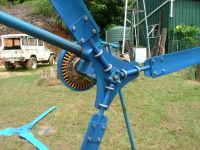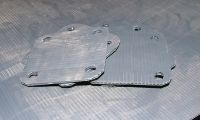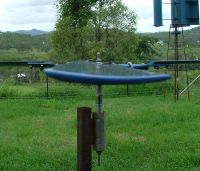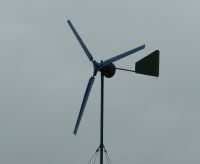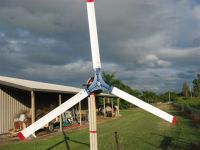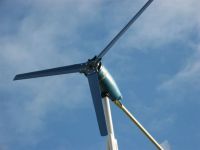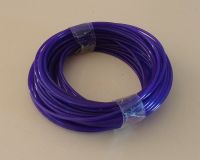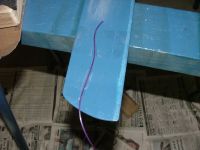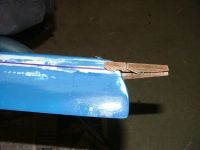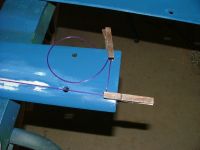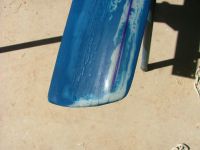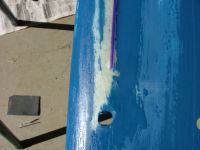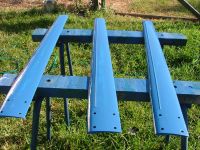Now I had a few emails from David
with the results of his test. In his words...
"Put them on my Chinese
hub and rebalanced. They have been up for 2 hours
now and I can already see some difference.
1. slightly negative. They
take more wind to start up.
2. up to 200 rpm (visual again) there virtually
no sound…….a definite improvement
3. from 200 to 600 it is also quieter probably
about 20% in that range
4. however there is still a high pitched whistle
that I can hear through my office window at 400-600
rpm (probably 45 metres)
5. this whistle could also be from the pm motor
its self……….Did you get any whistle
on your F&P?
6. I also believe that mill performs better at
the higher speeds but with out a logger its early
days "
then...
"I will just ramble on
and list it as it comes into my head. Observations
to date:
Your blades have been up 6
days now. Noise levels are a little high, at higher
revs the whistle gets higher pitched and can be
heard many many metres away. Still some of the
whine is the turbine as I don’t get it on
the F & P with Chinese blades. The reshaping
definitely requires a much higher starting speed.
However the start up speed here is still acceptable
for me. We get wind virtually every day from 10
am till 6 pm and quite gusty. With the original
standard Chinese blades and the Chinese controller
I have seen the amps stay between 4-8 and peak
burst up to 18-20 amps
Now for the good news:
After about 10 in the morning
the output with your blades shows 6-12 amp and
quite often bursts up to 24 and I have even seen
the amps go of the scale at 30 amps………The
high end improvement is dramatic!!!!!!!!!!!!!
(if only we could get the noise down). This makes
my 200w mill a great little beast."
So it looks like the modification
to the Chinese blades gives a big increase in
power, at the cost of a later startup speed. That
just means if you have enough wind, the modification
will turn your cheap 200 watt windmill into a
350watt plus windmill.
But there is still the big problem
of noise.
Then I stumbled across a story
on the Fieldlines windmill forums. In this message posting here,
this guy had a set of blades very similar to the
Chinese blades, but these were on a Bergey windmill
and had a ridge on the back which he sanded off.
They then made lots of noise. So he figured the
ridge must have been there for a reason and he
made his own ridge with a length of fine wire
and some sticky tape. Apparently it made the blades
dead quiet! So I send David another email asking
him to try the same and see if it makes a difference.
This is his reply...
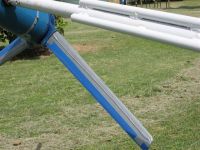 "...
all that’s left is a slight whisper, only
audible directly under the mill……..now
virtually silent even at 300-400 plus rpm. Bit
rough and crude all I had is 2.5 weed eater nylon
and cheap duct tape." "...
all that’s left is a slight whisper, only
audible directly under the mill……..now
virtually silent even at 300-400 plus rpm. Bit
rough and crude all I had is 2.5 weed eater nylon
and cheap duct tape."
So it worked. By adding this little
spoiler to the back of the blades the whistle
noise was eliminated, and David also says he has
noticed no change in performance, so no power
is lost. It looks like the guys at Bergey windmills
add this spoiler to make their blades quiet, but
the Chinese cheap copy of the Bergey windmill
doesn't include this modification.
David sent back the blades and
hub, I now had to work out how to add this ridge
to the blades as a permanent modification
What we need to add is a ridge
at the top of the airfoil profile. 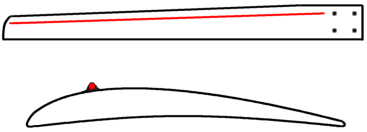 |


